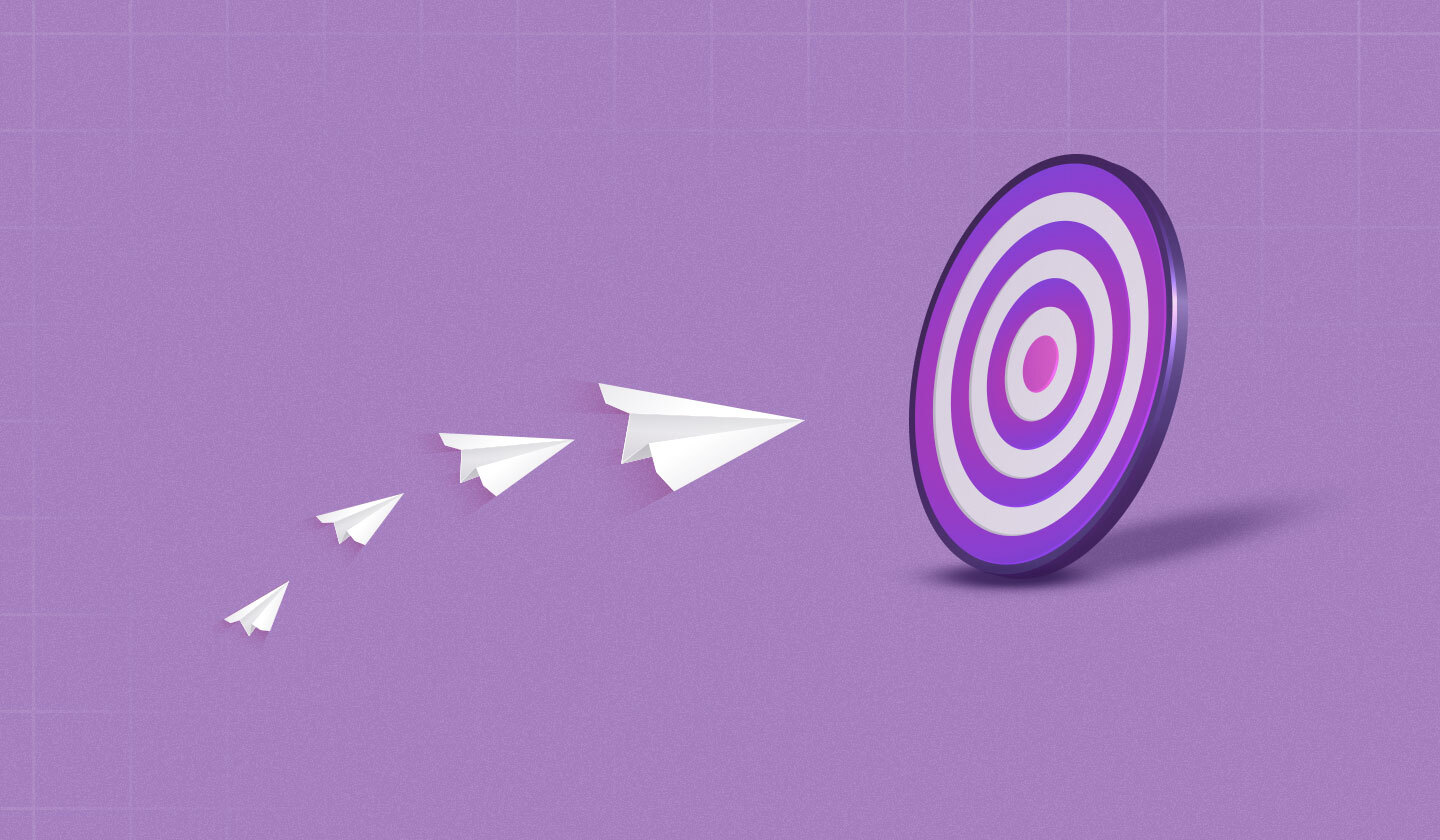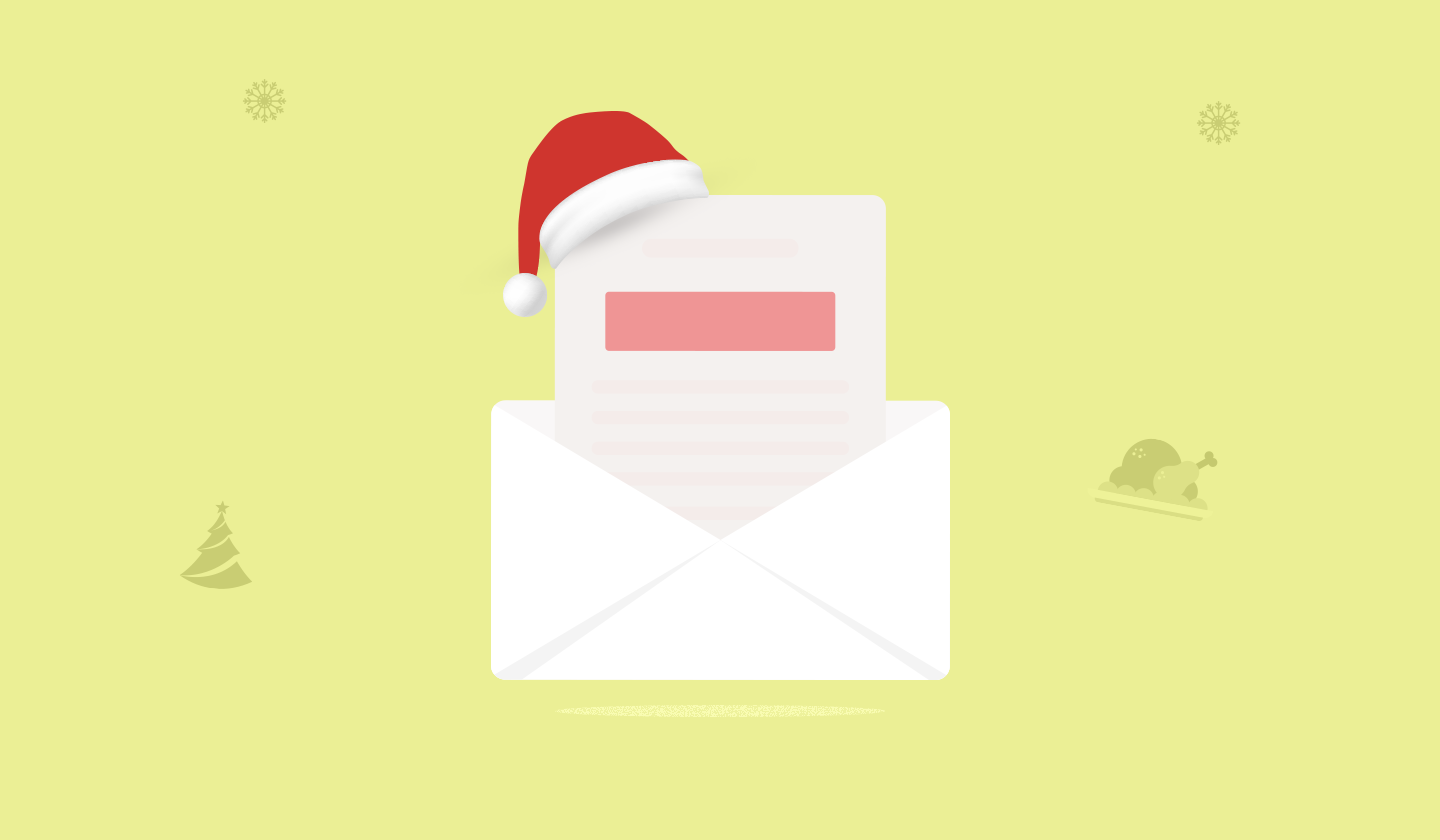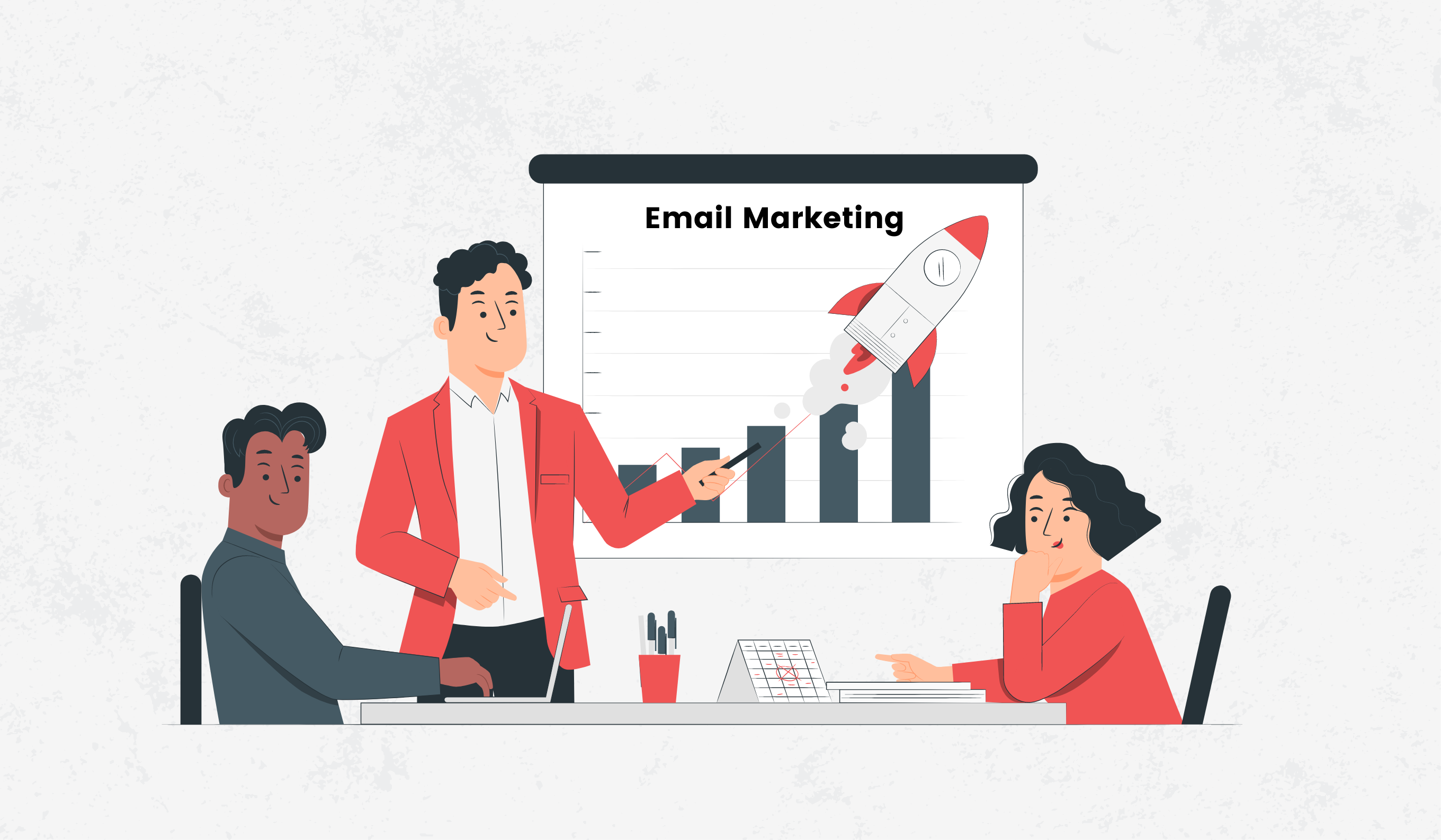Welcome to the wonderful world of email marketing for beginners where the previously impossible is now made possible - with email.
It might seem confusing at first, but we promise it’s worth it. And here’s why: with over 4.2 billion email users worldwide, you now have the opportunity to engage with much larger audiences than ever before.
But that’s not all. Most consumers now list email as their preferred marketing channel. Meaning email marketing simply isn’t something you can ignore.
And what about the thing that matters the most: Return On Investment (ROI)? Well, email marketing boasts the highest ROI among all marketing forms, with a potential ROI of $36 on every dollar spent.
Shocked? Excited? Can’t wait to learn more? Let’s dive right in, making our first stop at defining email marketing before continuing onwards to the only step-by-step guide you need on everything email marketing. All aboard!
What is Email Marketing?
Email marketing is a direct marketing strategy that uses personalized, mass emails to promote products or services, build relationships with customers, and prompt them to take specific actions.
Email Marketing for Beginners: How It Works in 7 Easy Steps
We've talked about what email marketing is and why it’s so important; time to look at how it works. At first, it may seem like email marketing has too many moving parts. But don’t let that scare you, you’ve got this.
Without further ado, let’s look at the 7 steps that lay the foundation of email marketing for beginners.
1. Figure out your goal
Email marketing isn’t something you can just blindly dive into. First, you need to hit the drawing boards to figure out why you’re interested in email marketing. What is your goal, and is there anything specific you’re trying to accomplish?
Defining a goal is crucial because it gives everyone a shared sense of direction and purpose. Moreover, with a set goal, you will have a framework to see how your email campaigns are performing over time.
Irrespective of what your goal is, always remember to make it SMART, i.e., Specific, Measurable, Attainable, Relevant, and Time-based.
Here are some examples of what your goal can look like:
Drive-up conversions by 10% via your email campaign
Increase your email list by 20% in the next quarter
Get at least 50 customers to fill out your review emails
Successfully execute A/B testing to figure out the perfect subject line within this quarter
2. Build your email list
Who are you sending the emails to? That’s the next step to figure out. For that, you need to have an email list, which, fair warning, can take some time and effort to build.
An email list is a database of all the contacts who would like to receive marketing communications from you. To start building the list, you need to figure out the possible points of contact where you can ask consumers to sign up or opt-in for receiving emails.
We know building your list can be time-consuming, but whatever you do, do not buy or rent an email list.
You’ll be sending emails to individuals who never signed up for them, meaning more chances of getting marked as spam. Get too many spam complaints, and your Email Service Provider (ESP) can block your account, maybe even fine you, and worse, take legal action against you.
So always remember: buying email lists is a huge no.
Create a strong lead magnet
The most commonly used list-building technique is creating a strong lead magnet. A lead magnet is a free offering companies give away to attract (like a magnet) potential customers (i.e., leads).
The catch is that customers will only get the offer if they sign up with their email - and that’s how you build your email list.

Here are some examples of what a lead magnet can be:
Coupon or discount
Trial subscription
Free sample
Mini guide or eBook
White paper
Free template
Free consultation or evaluation
Training video
Manage your email list with an ESP
Now that you have your list, you need an easy way to manage it. This is what an Email Service Provider (ESP) is for. An ESP is a platform that helps manage your email list while also enabling you to automate your email outreach.
So don’t forget to choose a suitable ESP for your business because it can make your email marketing way easier. How will you know which one is “right” for you? We’ll discuss more on that later in our bonus tips section.
3. Segment your email list
Email segmentation means grouping your email list into small sub-categories based on some common characteristics, demographics, or preferences they share.
Why bother? Because everyone has different likes and interests. So it doesn’t make sense to just blast out a generic email to your entire email list, now does it? That shows your customers how little you know them, inevitably leading to decreased engagement.
To keep your customers hooked, you need to send them incredibly personalized email campaigns. And those personalized campaigns are only possible with email segmentation.
Always remember, the better segmented your list is, the more targeted and effective your communication will be.

4. Know what email type to send
You have your email list, and you have the segments ready. Now, surely it’s time to send your first email?
Nope, not yet. But we’re getting there.
Before you can finally create your first email campaign, you need to know what type of emails you will be sending out.
“Types of emails?” you gasp. Yeah, it shocked us too, but apparently, there are a ton of email types out there, 11 to be exact. We’ve taken the liberty of listing them down for you:
Welcome emails
Emails you send just to pop in and say hello to any new customer or subscriber.
Here’s a free template you can use to send out those welcome emails instantly:
[

](https://unlayer.com/templates/welcome-email-for-watch-store)
Get this template here
Promotional emails
Emails for when there’s a special offer that customers need to know about, such as a discount or a coupon code.
Newsletter emails
Emails letting your subscribers know about the latest company or product news and updates.
Announcement emails
Emails to publicize something new, upcoming, or updated about your company or product.
Here’s a free email template you can use to announce an upcoming event:
[

](https://unlayer.com/templates/online-event-promotion)
Get this template here
Transactional emails
Emails you send when your customer performs a specific action, such as buying something from your site or requesting a password change.
Survey emails
Emails asking your subscribers to fill out a survey about their experience with your company.
Here’s a free survey email template you can use:
[

](https://unlayer.com/templates/employee-engagement-survey)
Get this template here
Milestone emails
Emails celebrating milestones with your customers to re-emphasize the sense of community. For example, celebrating a customer’s 1-year subscription anniversary by offering them a discount code.
Abandoned cart emails
Emails reminding customers to complete their checkout since they have abandoned items in their cart.
Here’s a free abandoned cart email template you can use:
[

](https://unlayer.com/templates/return-product-to-cart)
Get this template here
Educational emails
Emails for sending your subscribers valuable information about their interests or guides about their recent product purchase.
Re-engagement emails
Emails to try and get inactive subscribers back in the game.
Here’s a free re-engagement email template you can use to win those subscribers back:
[

](https://unlayer.com/templates/Finance-newsletter-re-engagement-email-template)
Get this template here
Last-chance emails
Emails to make sure your customer knows an offer is about to end and this is the last opportunity to get a good deal.
As you can see, there’s a different kind of email for every situation. And it’s important to know your email types because you don’t want to send a completely new subscriber a survey email right off the bat instead of a welcome email.
Similar to why email segmentation matters, knowing which email to send matters since it optimizes your communication and keeps your customer highly engaged.
5. Create your email campaign
Time to get those creative juices flowing. You know what the different email types are, now all you have to do is actually create them.
An email consists of 2 parts, the email copy, and the email design. The copy includes the text, whereas the design includes visual elements and the overall layout of your email.
Before you try your hand at it, let’s go over some best practices, so you know what to do.
Perfect your email copy
Everything you’ve learned up till now is absolutely vital, but are we forgetting something, maybe? Here’s a clue: the email itself.
If the email isn’t any good, it doesn’t matter how well you’ve done everything else, you’re not going to get anywhere, no ROI for you, it’s all just a distant dream.
Let’s ensure that doesn’t happen by turning our focus toward the email copy.
Any pre-written text you send via email is part of your email copy. So you need to choose your words carefully (just like our parents would tell us, right?). Here are some best practices on how to write the best email copy ever:
Consider using emojis in your subject lines
Personalize the email copy as much as possible
Try to keep it minimal, between 50 to 125 words
Align the tone with your brand
Complement the words by adding relevant images
If possible, add stats - numbers make a huge impact
Proofread a million times
Lastly, consider A/B testing. Make a few different variations of the same email copy, but change the subject line in one, the statistic used in the second, etc. Then sit back and see which one your audience responds best to, that’s going to be your winner.
Create an amazing email design
Words can only get you so far. Even if you write something at par with Shakespeare’s sonnets, if it’s surrounded by a horrendous design, it’s ending up in the trash folder. That is why you need to complement your email copy with the right design.
You don’t have to be a skilled artist to create beautiful email designs. All you need to do is let these email design best practices guide you through these trying times:
Use email-friendly fonts that are easy to read
Add relevant high-resolution images in PNG format and under 1MB in size
Don’t forget to add short yet meaningful CTAs
Choose colors that represent your brand, but don’t go overboard - 3 different colors max
Leave plenty of white space, so the design doesn’t look cluttered
Add actionable information, like contact details, to the email’s footer always
Make sure the design is mobile responsive
If designing isn’t your thing, you can make life easier for yourself and use email templates instead. You’re a marketer, so why get into the nitty-gritty of designing the email? Just pick out the suitable template, and you’re good to go.
6. Finally, launch your campaign
It’s time for the “L” word.
Yup, that’s right, it’s finally time to launch your campaign.
Before you hit the send button, the only thing left is to plan out the schedule for your email sequence. For this, you need to figure out how long the sequence will be, how many emails to send, and when.
There’s no set rule for how many emails you can include in your sequence. Just make sure the sequence is long enough to help you accomplish the goal you defined in Step 1.
The number of emails also depends on the type of sequence you’re launching. For example, if it’s a welcome email sequence, 2 to 3 are enough: the first to say hello and the following to share relevant information.
Next, figure out how far apart to time the emails. For example, if you’re sending educational emails, it’s fine to send one every 2 days. Just make sure you don’t bombard your subscriber by sending all your follow-up emails within a short period.
Get the timing right
When you choose to send your emails changes everything. If you’re sending an email at 8 am on a Monday when everyone’s rushing to work, no one will bother opening it, and all your effort will go down the drain.
So what is the right time to send your email then? Is there a right time? The right time is really something you have to figure out through trial and error. But there definitely are some major no-no’s to keep in mind:
Don’t send emails late at night or early in the morning
Keep your recipients’ timezones in mind
Mondays and Fridays are a big no for sending emails, unless the email is about a special sale you’re only running on either of those days
Mid-week, i.e., Tuesday through Thursday, is the best time to send out emails
It’s alright to email on the weekend only if you have a special event or sale happening on those days
Once you’ve figured out the right time and the sequence schedule, it’s time to send your babies out into the world.

7. Track your results
Now that your hard work has seen the light of day, is your job over? Far from it, actually. Email marketing is more than just launching an email campaign. A significant part of it includes constantly tracking and measuring how your campaign is doing.
Before you can start tracking, you need to define the right metrics. The metrics you choose to track depend entirely on what the goal is for your email campaign (refer to Step 1).
Here are some commonly measured email marketing metrics for you to choose from. However, a word of advice: don’t start tracking all of these metrics at once. Instead, pick 3 or 4 vital few that align with your defined goal, and only focus on monitoring and improving those.
Click-through rate
Click-Through Rate (CTR) shows you the percentage of viewers who clicked on at least one of the links in your email.
Formula: [(Number of clicks on at least a single link) ÷ (Total number of emails delivered)] x 100
Bounce rate
Bounce rate is the percentage of emails that aren’t received by your subscriber list because the recipient mail server returned them. They usually occur because the email address used does not exist or is no longer functional.
Formula: [(Total number of bounced emails) ÷ (Total number of emails sent)] x 100
Unique opens
Unique opens show how many people opened your email. So if 1 person opens your email 10 times, your unique open will be 1, whereas your open rate will be 10.

Unsubscribe rate
The unsubscribe rate represents how many people have unsubscribed from receiving future emails from you.
Formula: [(Total number of unsubscribers) ÷ (Total number of emails actually delivered)] x 100
“Total number of emails actually delivered” means you will not include bounced emails in this calculation.
Spam complaints
Spam complaints are the number of times your emails have been marked as spam by your recipients. Too many of these and your IP could get blocked.
Email sharing
If your email includes a “share this” button, then you might want to track this metric. It will show you how many times your email has been shared.
Formula: [(Total number of “share this” clicks) ÷ (Total number of emails actually delivered)] x 100
List growth rate
This metric tracks the rate at which your email list is growing.
Formula: [(Number of new subscribers) - (Number of unsubscribers)] ÷ (Number of email addresses in your list) x 100
Bonus Tips to Make Email Marketing for Beginners Easier
Now that you know the 7 steps to build and launch your own email marketing campaign, is it all over? Do we go our separate ways? Not yet, because we’ve got some bonus tips to make email marketing even easier for you.
Pick the right email service provider
Previously, we talked about how you need an ESP to manage your email list and automate your email sequence. They also make it easier to customize your campaigns based on your audience segment. The benefits are endless, but only if you choose the right ESP.
Here are some essential elements your chosen ESP should have:
High deliverability rates
Analytics and reporting features
Easy integration with your CRM or eCommerce platforms
Ability to segment and personalize
Scheduling and automating emails
A/B testing
Experiment with your subject line
The email subject line is the first impression you’re making, so better make it a good one. But writing the perfect subject line is super tricky. You could follow all the writing tips and tricks out there and still get no engagement on your emails.
What’s the solution, then?
Simple: test, test, and test!
Always keep experimenting with your subject line. Send different versions to different email segments to see which one gets the best results. Make one promotional, add an emoji in the other one, and keep one short - experiment until you find what works for you.
Keep email regulations in mind
When you send out emails, remember that you are a guest in your recipient’s inbox. And as a guest, there are specific rules and regulations you must follow. Fail to follow these rules, and your email can end up in the trash can or, worse, the spam folder.
The most critical regulation perhaps is the CAN-SPAM law in America. According to this law, commercial emails must not have deceptive or misleading headers and subject lines. Moreover, emails should also include an obvious way for recipients to opt-out of future communication from you.
Failure to comply with these regulations not only gets you marked as spam but may also come with a hefty fine.
Ensure mobile responsiveness
More and more people are now using their mobile devices to do everything, from checking their emails to shopping to even watching Netflix on there. You must check that the emails you create look good and are responsive, even on a mobile phone.
The same email design you use for desktop cannot carry forward when it comes to mobile responsiveness. Mobile-friendly email designs have a different layout entirely. The font size changes, the image dimensions you use for desktop emails become too big for mobile screens, etc.
So whenever you create an email, make sure you test it out for mobile responsiveness as well. If that seems like an unnecessary added step, we’ll let you in on a little secret. You could just skip this step entirely by using mobile-responsive email templates.
Conclusion
Email marketing for beginners may sound super complicated, but it doesn’t have to be. As long as you follow this guide, you’re ready to take on the world.
All the bigshots you see in the email marketing sphere now were once just like you - standing at the start line. Look at them now. That can easily be you. Just have a clear goal in mind, and the rest will naturally fall into place.
Now go out there and make us proud.





